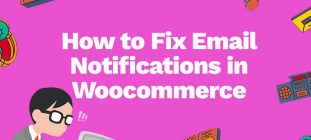
Imagine yourself in a brick-and-mortar store looking for a new TV. There are so many models on display—all of which have gorgeous images—you’re overwhelmed. Looking for a salesperson to help you make sense of it all, nobody there can provide you with any useful details. Will you take a chance and pick one at random, or will you look for a store at which you can get more information?
Now, consider this: Product pages are the salespeople at your ecommerce store. Incorporating these ecommerce product page best practices will ensure your customers have all the information they need, which, in turn, will lead to more conversions for your site.
Strong Pictures Attract Attention
The primary image of the product should be shot at eye-level and give an accurate representation of its appearance. When you sell electronics (or any other product for that matter) you want that picture to be sharp, well-lit and photographed against a neutral background so it stands out.
Accompanying that image should be a gallery of shots depicting the product from every possible angle. If the product is offered in different colors, each of the available colors should be shown as well. If the product lends itself to appearing in a lifestyle image, include a couple of shots depicting the product in use so shoppers can imagine themselves interacting with it.
Supporting Copy Draws Shoppers In
The page’s headline should list the name of the product, its model number (if available) and the price. Next, you should outline key features, specifications and customization options (if any). Always include a prominent call to action, in case the shopper is already familiar with the product and wants to make a purchase right away. Whenever possible, all of this information should appear “above the fold” so the user can take it in at a glance.
Run a well-written product description below the fold whose tone and tenor speaks directly to the sensibilities of your ideal customer. The description should be focused around benefits, rather than features, and should contain keywords search engine users would employ when running queries for the product. Bullet points and neumorphic design will keep the look of the page interesting, while breaking information down into bite-sized chunks. Include a prominent call to action there as well.

Moving Pictures Hold Attention
Whenever the product lends itself to being effectively depicted using video, always do so. People are visual creatures and most prefer to hear information rather than read it for themselves. A nicely produced video accomplishes all of the above. Make sure the look of the video is reflective of the overall esthetics you establish for the site. The script should be written using the vernacular favored by your target customers.
Word of Mouth Closes Sales
People who say silence is golden never had anything to sell. Whenever your patrons are pleased encourage them to sing your praises in the form of customer reviews. Running a selection of them on your product pages says others have made the purchase and enjoyed the experience. This builds trust, which seals deals.
Go for the Add-on Sale
Featuring related products at the bottom of your product pages helps shoppers find things that complement their purchase. You can also show them what other customers have bought along with the item, as well as items for which the purchase might generate a need in order to get the most out of it.
Address Potentially Unresolved Issues
Adding a link to your FAQ page will help customers find answers to lingering questions. You should also link them to shipping information and the details of return policy. All of this reassures the customer they’re buying from a seller who will be there if something goes wrong.
Incorporating these ecommerce page best practices will ensure your customers never wander your aisles looking for a knowledgeable salesperson. And that’s how you build a loyal following of satisfied customers.
















